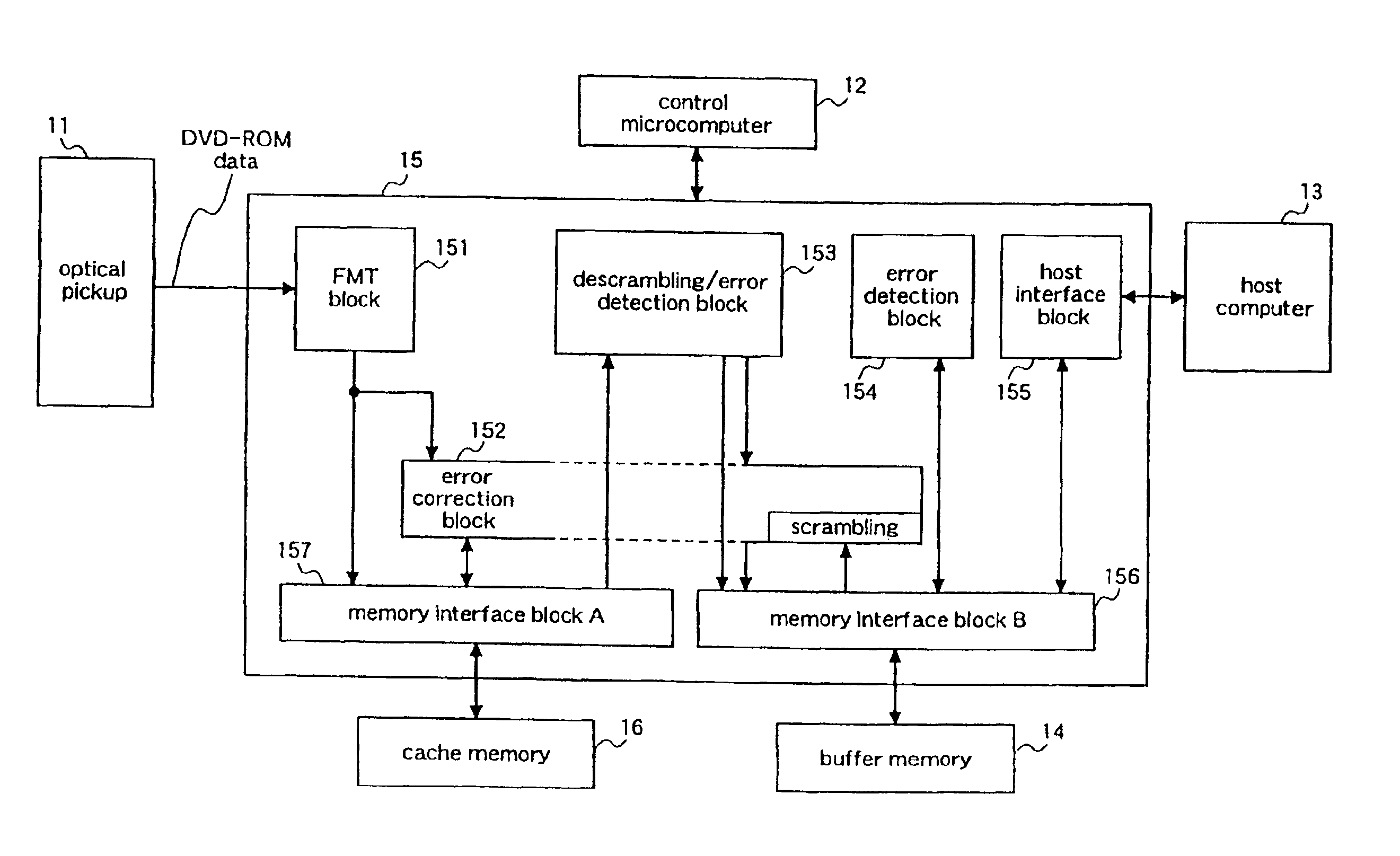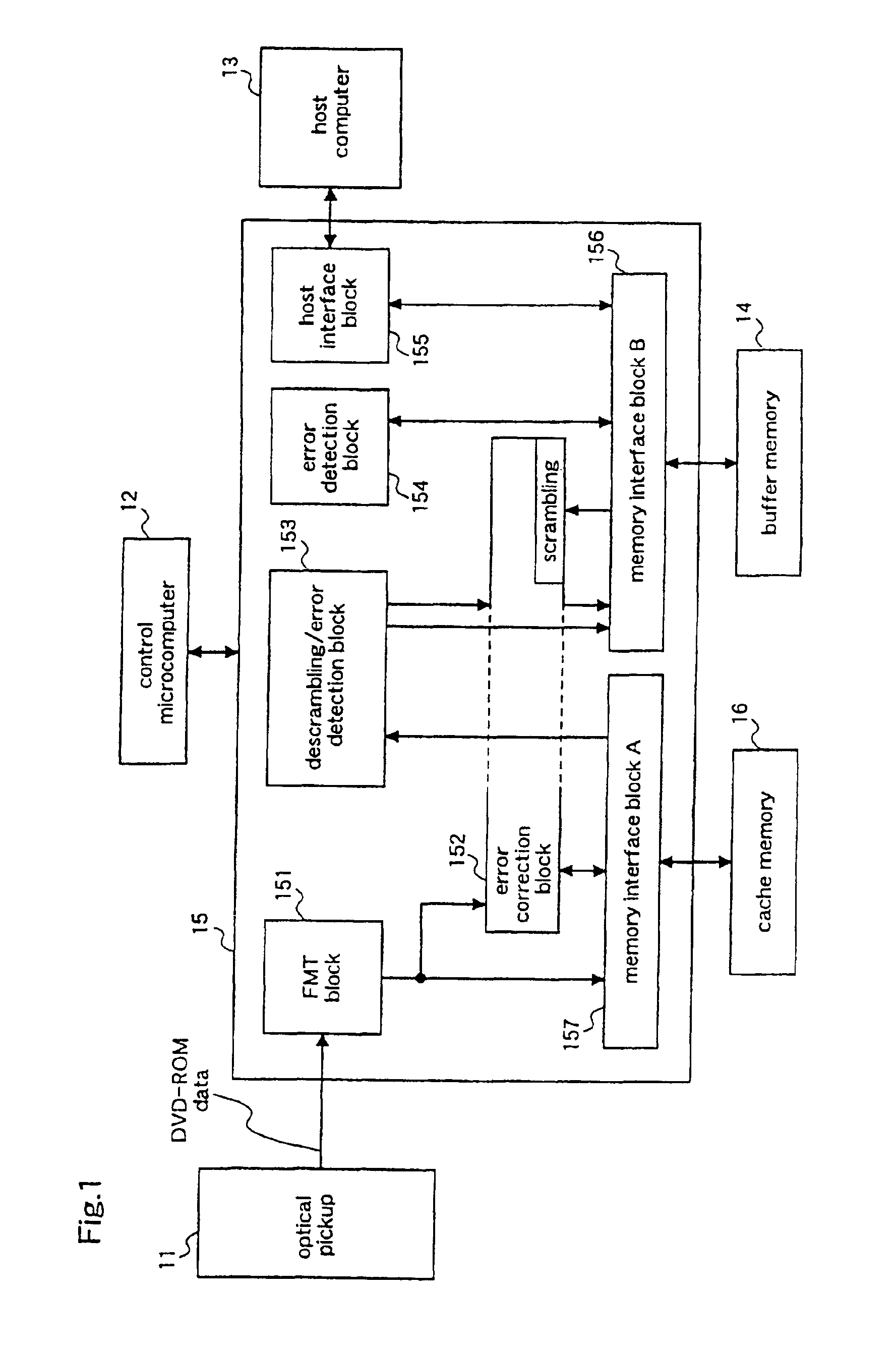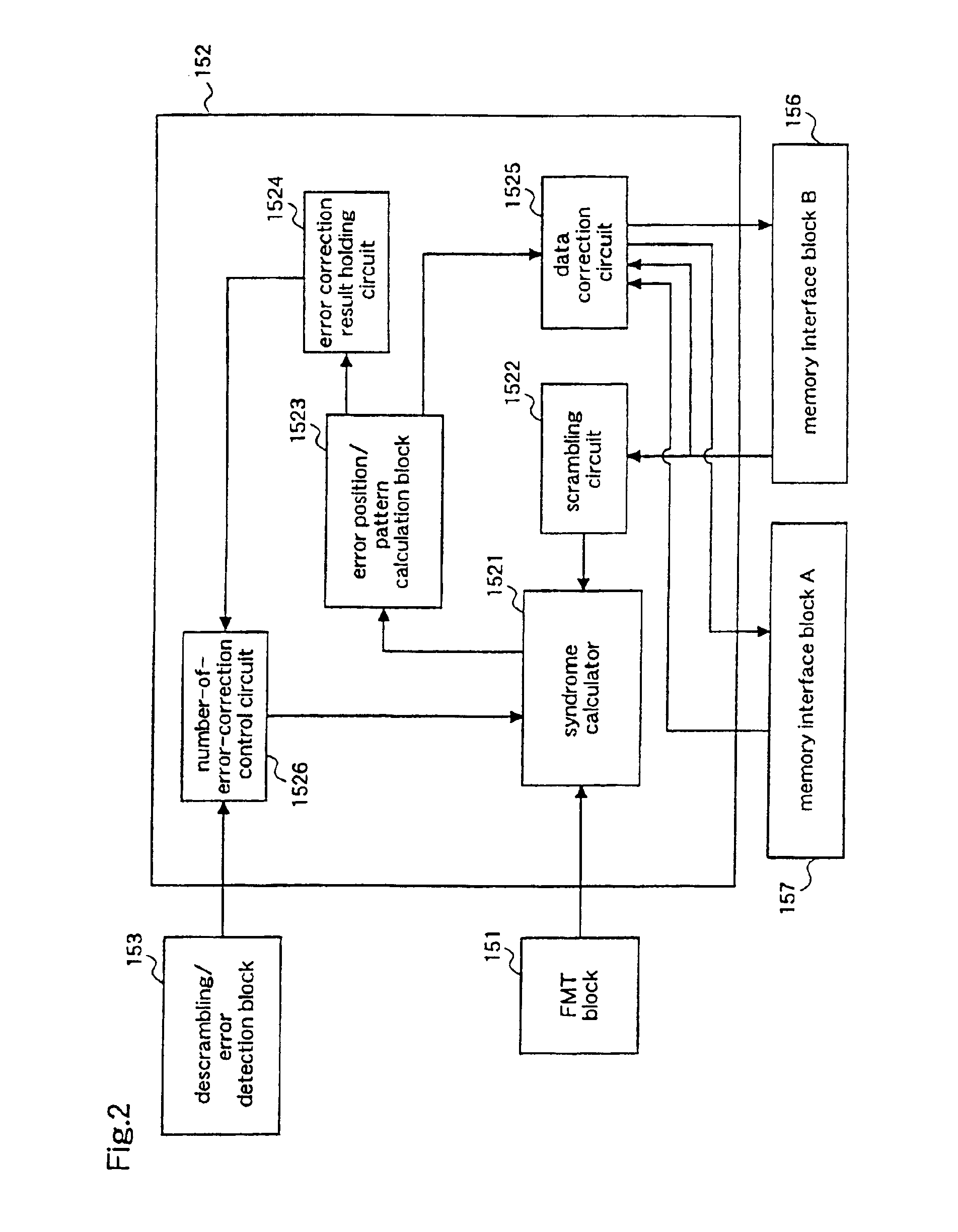Signal processor for correcting and detecting errors
a signal processor and error detection technology, applied in the field of signal processors, can solve the problems of high error rate the signal processor cannot perform high-speed access and higher-speed data processing, and the error rate is higher in the dvd-rom data than in the cd-rom data, so as to achieve high-speed data transmission and reduce the time required for memory access to the memory means
- Summary
- Abstract
- Description
- Claims
- Application Information
AI Technical Summary
Benefits of technology
Problems solved by technology
Method used
Image
Examples
embodiment 1
[0034]FIG. 1 is a block diagram illustrating the structure of a DVD-ROM signal processor according to a first embodiment of the present invention.
[0035]In FIG. 1, a DVD-ROM signal processor 15 receives DVD-ROM digital signal data (hereinafter referred to as “data”) which is read by an optical pickup 11, and outputs the data after error correction to a host computer 13. The DVD-ROM signal processor 15 is controlled by a control microprocessor (controller) 12, and the DVD-ROM signal processor 15 is connected to a cache memory 16 for storing the data and to a buffer memory 14 for storing the data stored in the cache memory 16.
[0036]To be specific, the DVD-ROM signal processor 15 is provided with an FMT block 151 for capturing the DVD-ROM data outputted from the optical pickup 1; an error correction block 152 for correcting errors in the data stored in the cache memory 16 and the buffer memory 14; a descrambling / error detection block 153 for descrambling the scrambled data, and detectin...
embodiment 2
[0045]FIG. 2 is a block diagram illustrating the internal structure of an error correction block according to a second embodiment of the present invention.
[0046]With reference to FIG. 2, an error correction block 152 is provided with. a syndrome calculator 1521 for performing syndrome calculation; a scrambling circuit 1522 for scrambling descrambled data; an error position / pattern calculation block 1523 for calculating an error position in data and an error pattern on the basis of the result from the syndrome calculator 1521, and detecting data having uncorrectable errors (hereinafter referred to as “error uncorrectable data”); an error correction result holding circuit 1524 for holding information as to whether there is error uncorrectable data or not, which is detected in the error position / pattern calculation block 1523; data correction circuit 1525 for correcting errors in the data according to the error position and the error pattern calculated from the syndrome by the error po...
embodiment 3
[0056]FIG. 3 is a block diagram illustrating the internal structure of a descrambling / error detection block according to a third embodiment of the present invention.
[0057]In FIG. 3, a descrambling / error detection block 153 is provided with a descrambling circuit 1531 for descrambling scrambled data; an error detection circuit 1532 for detecting errors in the descrambled data; and an error detection result holding circuit 1533 for holding the result of error detection (presence or absence of error) by the error detection circuit 1532.
[0058]The operation of the descrambling / error detection block so constructed will be described with reference to FIG. 3.
[0059]Initially, the data which has been subjected to error correction in the error correction block 152 is inputted to the descrambling circuit 1531 from the cache memory 16 through the memory interface block A 157, and the data is descrambled according to a predetermined method. The descrambled data is transmitted to the error detecti...
PUM
 Login to View More
Login to View More Abstract
Description
Claims
Application Information
 Login to View More
Login to View More - R&D
- Intellectual Property
- Life Sciences
- Materials
- Tech Scout
- Unparalleled Data Quality
- Higher Quality Content
- 60% Fewer Hallucinations
Browse by: Latest US Patents, China's latest patents, Technical Efficacy Thesaurus, Application Domain, Technology Topic, Popular Technical Reports.
© 2025 PatSnap. All rights reserved.Legal|Privacy policy|Modern Slavery Act Transparency Statement|Sitemap|About US| Contact US: help@patsnap.com



